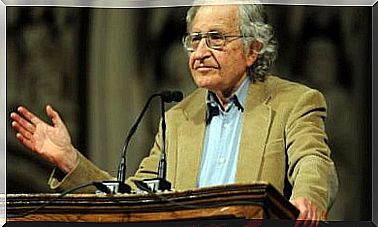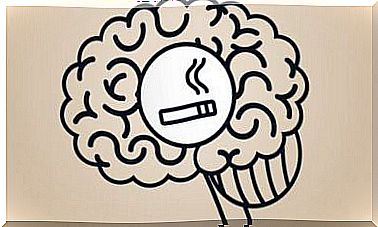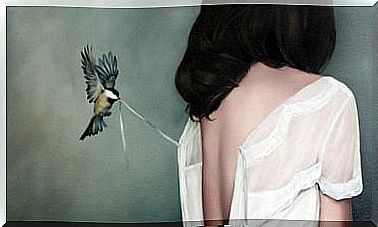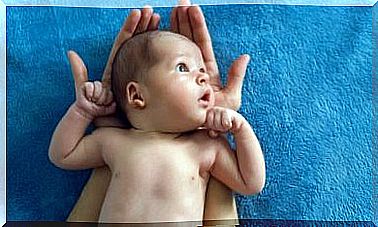The Alien Hand Syndrome: A Little Known Disorder
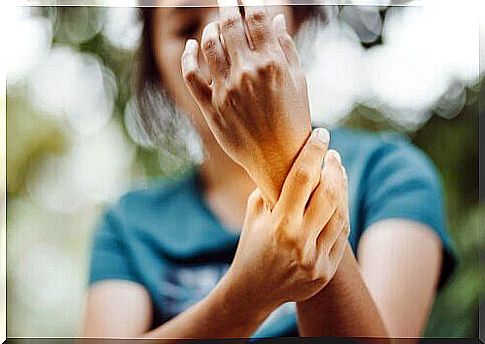
The alien hand syndrome (AHS) is a condition that few people know. yet it has a real impact on the people who suffer from it and on those around them. This condition is a neurological disorder that is not very common. However, it does cause serious limitations. So we need to learn more about it.
What the body experiences is a very complicated process. Actually, it includes multiple sensory signals. When there is a problem with these signals, various neurological disorders can arise.
For example, people may feel that an amputated body part is still there. Or you have the feeling that you have more than two arms or legs.
The History of Alien Hand Syndrome
In 1908 Goldstein described the case of a patient who had a stroke on the right side of the brain. After the stroke, the patient claimed that her left leg felt weak. She even had the feeling that her left arm didn’t belong to her.
In 1944 Akelaitis described two cases. These patients had their corpus callosum cut to treat their epilepsy. One of them claimed that his left hand is making involuntary movements that are the opposite of what he wanted his right hand to do. The doctors called the condition diagnostic dyspraxia.

In 1972, Brian and Jedynak named this condition alien hand syndrome. These authors interpreted the erratic behavior of the left hand as a pathognomonic sign of a callosal injury. They analyzed the behavior of four patients who showed many signs of the disconnection syndrome.
They had the following symptoms, among others:
- Difficulty naming objects that were out of the left hand’s field of view.
- Difficulty making movements with the left hand after a verbal command.
- Constructional apraxia.
- Agraphia on the left hand.
- Hemispatial neglect or attention deficit
- Difficulty transferring sensory information from one hand to the other.
After all the studies, they were able to show that the symptoms of AHS could be linked to multiple nosological (pathology) disorders.
The alien hand syndrome
Patients with AHS feel as if their limb is moving on its own. He makes involuntary movements that seem purposeful. In fact, these movements often work against the opposite limb.
People with this syndrome also often think that their limb is not part of their body. It’s like he doesn’t belong to them. In many cases they are even afraid of these involuntary movements. They then try to focus all their attention on attempts to stop and prevent those movements.
Sometimes patients suffering from alien hand syndrome are able to control those movements themselves. For that reason, in 2006, author Biran and his collaborators suggested that this condition had three main elements:
- The limb is obstructed. He often responds to rational environmental stimuli. This then leads to user behaviour.
- The sequence of the motor fragments in the uncontrolled limb makes its movements appear voluntary and controlled.
- There is clear awareness of the alien limb’s behavior.
Thus, in stressful situations, AHS can get worse.
Experts also say the following:
- Interesting objects close by can trigger the symptoms.
- The behavior manifests itself when the patient’s attention is weakened.
What Causes AHS?
You may be wondering what causes alien hand syndrome. The causes are surgical procedures such as cutting the corpus callosum to treat epilepsy that is resistant to drugs (this procedure is no longer performed) and the removal of a tumor.
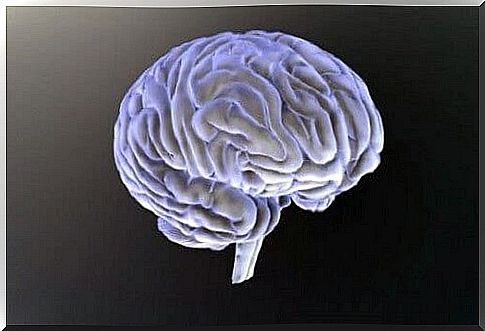
Types of Alien Hand Syndrome
Frontal AHS
Frontal AHS leads to damage in certain brain regions:
- The supplementary motor cortex
- The cingulate cortex
- The anterior part of the corpus callosum
- The prefrontal cortex
An injury to the medial temporal cortex causes changes in the opposite hand.
Callosal AHS
- This form of AHS occurs in the same hand as the dominant hemisphere of the brain.
- It can also manifest itself in patients whose corpus callosum has been affected.
- A frontal injury of the non-dominant cerebral hemisphere may be associated with this, especially in the supplementary motor cortex.
- There may also be a contradiction between the two hands and apraxia.
During the last ten years of the twentieth century, several authors have defined a new form of AHS: posterior AHS. This variant is less common than the shapes we have already mentioned. The features of this new form are independent movements and the personification of the affected limb.
Therapy
The treatment of this syndrome consists of several techniques:
- Stimulate perception and control.
- Keep stress under control.
- Compensatory strategies.
A movie reference
In 1994, Stanly Kubrick directed a film called Dr. Strangelove. It was based on the novel Red Alert by Peter George. The novel tells the story of an insane commander’s attempts to start a nuclear war and how others try to stop him.
Strangelove is a very extravant character who experiences strange movements of the limb. His right hand seems to be alive. Throughout the film, the movements of that right hand are involuntary and inappropriate.
The doctor even tries to control those movements with his other hand. In a successful way, the film shows what it is like to live with AHS.



